Background
It doesn't matter which experiment generator you use to run your computer-based Psychology experiments the Black Box ToolKit advanced USB serial response pad with independent millisecond timer, light sensor & voice key helps improve your millisecond reaction time (RT) accuracy.Streams activity on up to 10 buttons and all timings over serial. Also turns a button press, light sensor or vocal response into a USB keyboard keystroke for ease of integration with existing experimental scripts making it truly plug in and play.


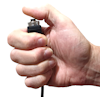
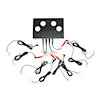
Works on any platform including iPads, Android tablets and phones.
Millisecond accurate 1-10 button advanced USB response pad with millisecond timer, light sensor & voice key key features
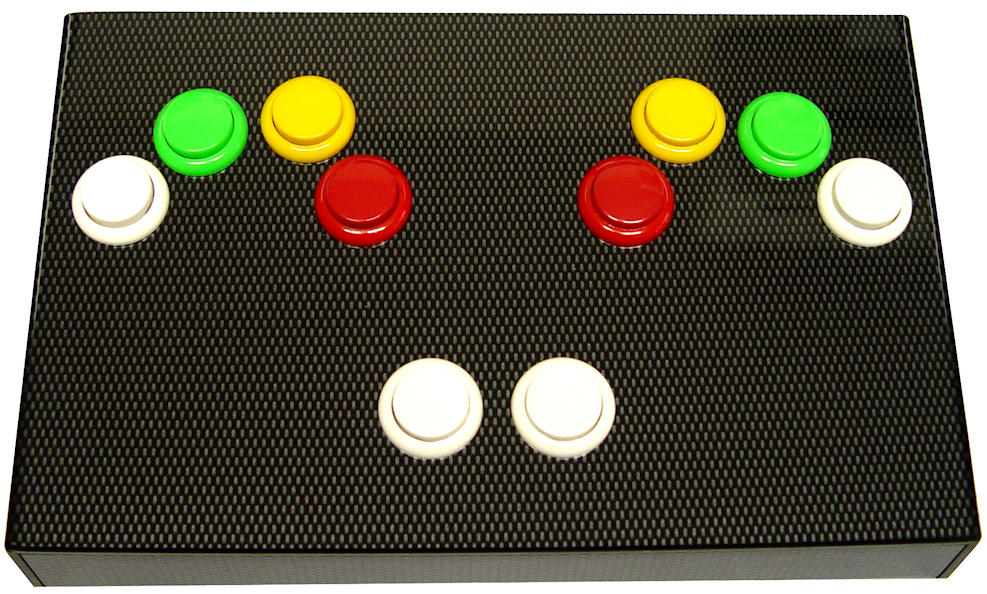
 Our advanced USB serial response pad, the T-Pad, is designed to quickly and easily help you achieve better millisecond accurate timing in your Psychology experiments. It has a hardware based timer that is completely separate from your computer and gives independent timings for visual stimulus onsets, button presses and vocal responses via a voice key microphone.
Our advanced USB serial response pad, the T-Pad, is designed to quickly and easily help you achieve better millisecond accurate timing in your Psychology experiments. It has a hardware based timer that is completely separate from your computer and gives independent timings for visual stimulus onsets, button presses and vocal responses via a voice key microphone.All activity the response pad detects is streamed to your experiment along with an independent timestamp. That might be the onset, duration and offset of a visual stimulus image, a button press or a vocal response.
By using photodiodes, or opto-detectors, that attach to your screen the T-Pad can detect visual stimulus onsets as they happen in the real world, independently timestamp them and send them to your experiment over serial VCP. It also detects responses on up to 10 built-in buttons and provides millisecond accurate reaction times or RTs. Up to 10 external hand-held response buttons and foot pedals can also be used to capture responses along with TTL trigger input and a voice key microphone.
Alternatively simply plug a second USB lead into a USB port on your PC/Mac/Linux system and our advanced USB response pad will appear as a second keyboard. Also works on any platform including Apple iPads, Android tablets and phones with appropriate adapter. Press a button and a standard keystroke will be sent to your experiment.
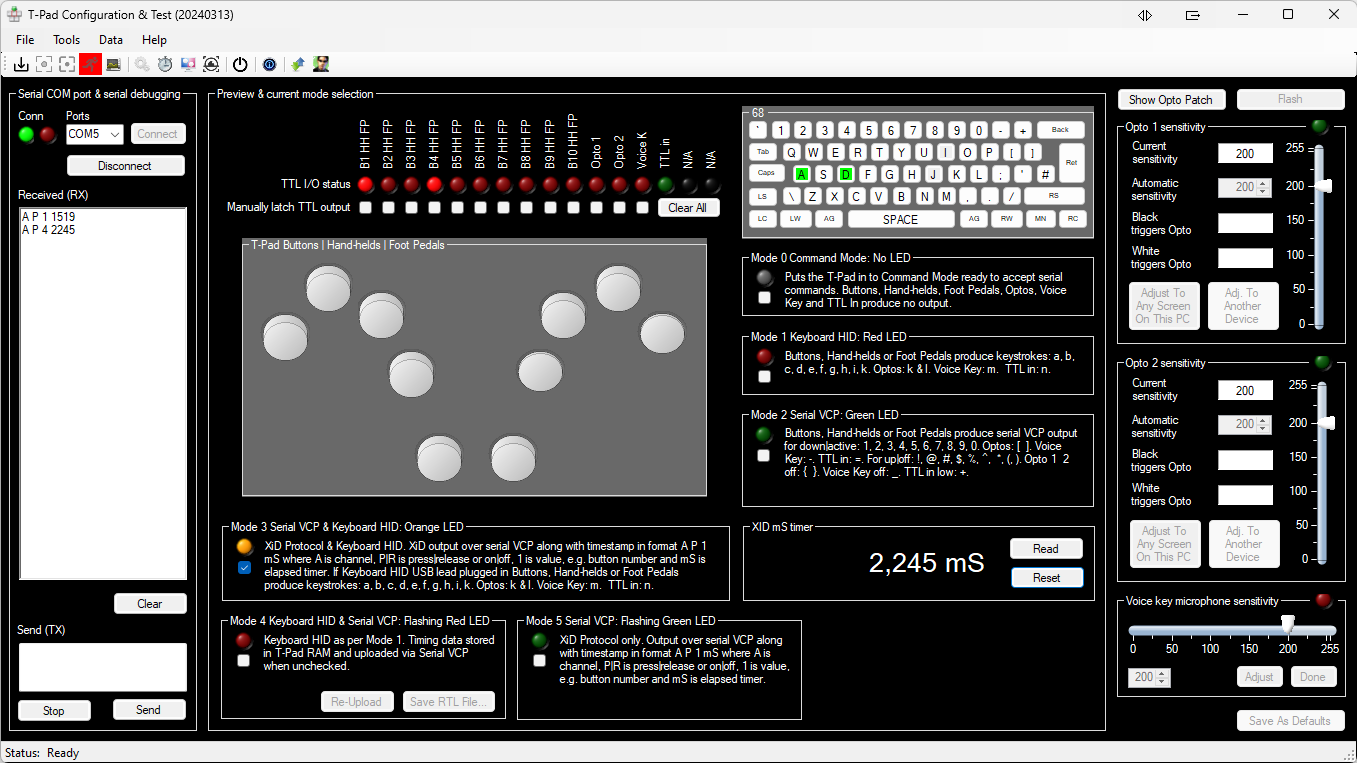
If you wish to use standard USB keyboard HID key presses our partner App enables you to quickly and easily integrate presentation and response measurements within your existing studies as it will record all millisecond accurate timing data generated by your experiment as it runs. You just concentrate on standard keyboard key presses and leave the heavy lifting to us!
No need to recode! Works out of the box with E-Prime, SuperLab, Presentation, Inquisit, PsychoPy or any other software that can accept standard keyboard responses. Activity on a photodiode, microphone or TTL trigger input also produces a standard keyboard keystroke alongside button presses.
Once your experiment has finished you can review the independent timing data collected by the T-Pad and use it alongside timing data collected by your own experiment as it ran. Our response pads aim is to let you add value to your experiments by collecting millisecond accurate timing data for presentations and responses without having to recode.
If you want to go deeper you can choose to read the streamed serial timing data directly into your own experiment using the simple T-Pad API and examples provided for popular experiment generators and programming languages.
What's more the T-Pad also features hardware based TTL triggers which automatically event mark activity related to onsets and reaction times in the real world as they occur with sub-millisecond accuracy. The T-Pad is an easy to use fit and forget solution for TTL event marking/TTL triggering in psychology experiments that use EEG, fMRI, Eye Tracking or any study where you need to event mark with sub-millisecond accuracy.
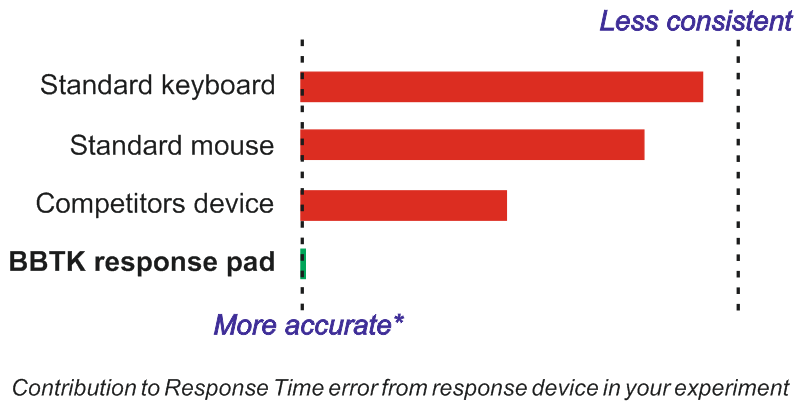 As an added bonus you can use the T-Pad to produce simple TTL event marks from your own studies. For example, you can output TTL signals from your own code using any spare lines you are not using. For example if you had a response pad with 6 buttons that would leave 4 spare button TTL event marks you could control from your own code. In short alongside automatically generated hardware TTL event marks you also have the option to generate them from your own experiment at any point and on any TTL out!
As an added bonus you can use the T-Pad to produce simple TTL event marks from your own studies. For example, you can output TTL signals from your own code using any spare lines you are not using. For example if you had a response pad with 6 buttons that would leave 4 spare button TTL event marks you could control from your own code. In short alongside automatically generated hardware TTL event marks you also have the option to generate them from your own experiment at any point and on any TTL out!Finished in an attractive carbon fiber effect our response pad houses up to 10 buttons in a range of sizes and colors with the option to add tamper proof clear keycaps. If you opt for a custom laser cut solution you are free to design your own button layout to make your response pad truly bespoke to you!
Our response boxes & response pads aim to reduce inconsistencies and improve your Response Time accuracy compared with using standard keyboards, mice or competitors devices.
See a worked example showing how the T-Pad could work for you.
*Remember although our USB response pads hardware is millisecond accurate and helps reduce RT variability in your experiments it cannot automatically correct for any mistimings that are inherent within the experiment generator or other hardware you use.
For example, if your experiment generator presents an image and does not check for a response in a timely fashion, your OS intervenes, or an anti-virus check runs, your Response Times will remain inaccurate regardless of the quality of the response device. What | Why | How
For self-validation you should independently check the accuracy and consistency of your experiment generators presentation and response timing, or system as a whole, with a Black Box ToolKit v3 together with a BBTK USB response pad.
Key features
|
|
Operating modes
By utilizing dual USB leads you have the option of how to use the T-Pad in your study. Either use live serial data with timestamps, keyboard HID keystrokes or a combination of the two.| Mode, LED & which USB interface |
What is output and over which interface |
| Mode 0 Command Mode: No LED | Puts the T-Pad in to Command Mode ready to accept serial commands. Buttons, hand-helds, foot pedals, optos, voice key and TTL In produce no output. |
| Mode 1 Keyboard HID: Red LED | Buttons, hand-helds or foot pedals produce keystrokes: a, b, c, d, e, f, g, h, i, k. Optos: k & l. Voice key: m. TTL in: n. |
| Mode 2 Serial VCP: Green LED | Buttons, hand-helds or foot pedals produce serial VCP output for down|active: 1, 2, 3, 4, 5, 6, 7, 8, 9, 0. Optos: [ & ]. Voice key: -. TTL in: =. For up|off: !, @, #, $, %, ^, & *, (, ). Opto 1 & 2 off: { & }. Voice key off: _. TTL in low: +. |
| Mode 3 Serial VCP & Keyboard HID: Orange LED | XiD protocol & keyboard HID. XiD output over serial VCP along with timestamp in format A P 1 mS where A is channel, P|R is press|release or on|off, 1 is value, e.g. button number and mS is elapsed timer. If keyboard HID USB lead plugged in buttons, hand-helds or foot pedals produce keystrokes: a, b, c, d, e, f, g, h, i, k. Optos: k & l. Voice Key: m. TTL in: n. |
| Mode 4 Keyboard HID & Serial VCP: Flashing Red LED | Keyboard HID as per Mode 1. Timing data stored in T-Pad RAM and uploaded via Serial VCP when unchecked or your experiment has ended. |
| Mode 5 Serial VCP: Flashing Green LED | XiD Protocol only. Output over serial VCP along with timestamp in format A P 1 mS where A is channel, P|R is press|release or on|off, 1 is value, e.g. button number and mS is elapsed timer. |
Software App for testing and configuring your T-Pad
Our partner PC App allows you to test and configure the T-pad with ease. Simply connect both USB leads and you can preview timing data as well as the keyboard HID keystrokes that are sent to your experiment.
In addition to allowing you to test that everything is connected and working correctly, such as button presses, it also helps you automatically set opto-detector sensor sensitivity.
All you need do is attach our light sensor, or photodiode, to your screen and a black patch followed by a white patch will then be shown and the opto-detector sensitivity set. Once the opto sensitivity has been automatically set you will be able to reliably detect and independently timestamp the onset, duration and offset of a visual stimulus in your experiment.
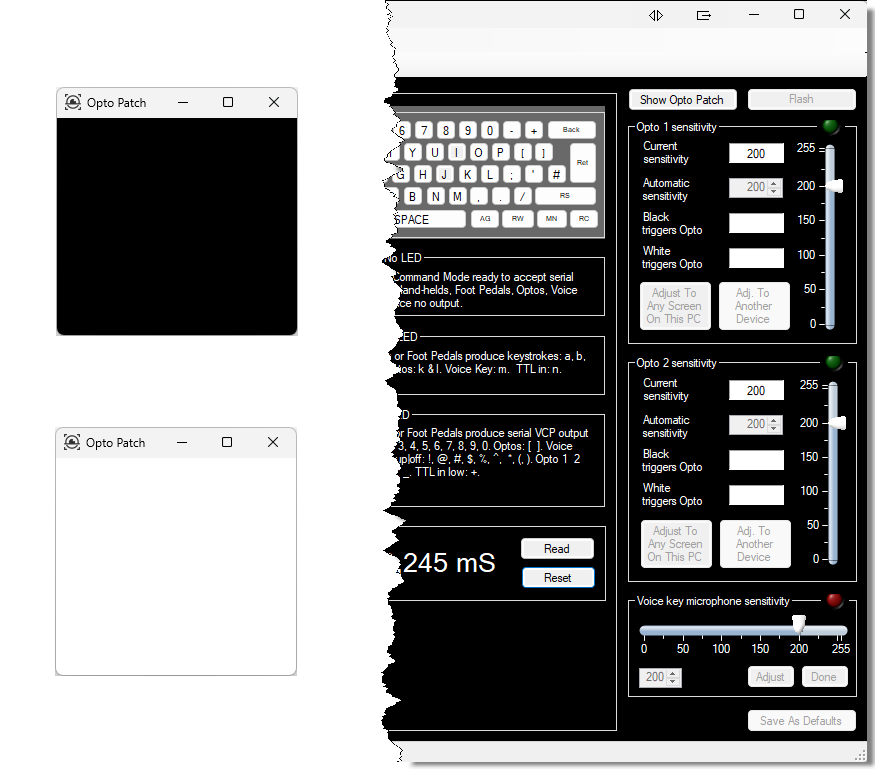
In a similar way the App also allows you to set the activation point, or crossing threshold, for our voice key microphone which will then trigger when the onset of a vocal response is detected. Once opto and voice key sensitivity has been set it can be saved to the T-Pad so that it is recalled the next time either of the USB leads are connected to your computer.
Capturing timing data alongside your own experiments
If you wish to keep your experiment simple and just detect keystrokes as if pressed on a standard USB keyboard our App can capture all timing data that is simultaneously streamed to it alongside your own experiment. You can then analyze all timing data and match presentation and response activity to that captured by your experiment, but by using the T-Pads independent hardware timings you can be sure of your results. To help automate this your own experiment can control when our App starts and stops collecting timing data.Should you choose to independently capture timing data along side your own experiment you can use our analyzer to visualize that activity and examine individual visual presentations and responses.
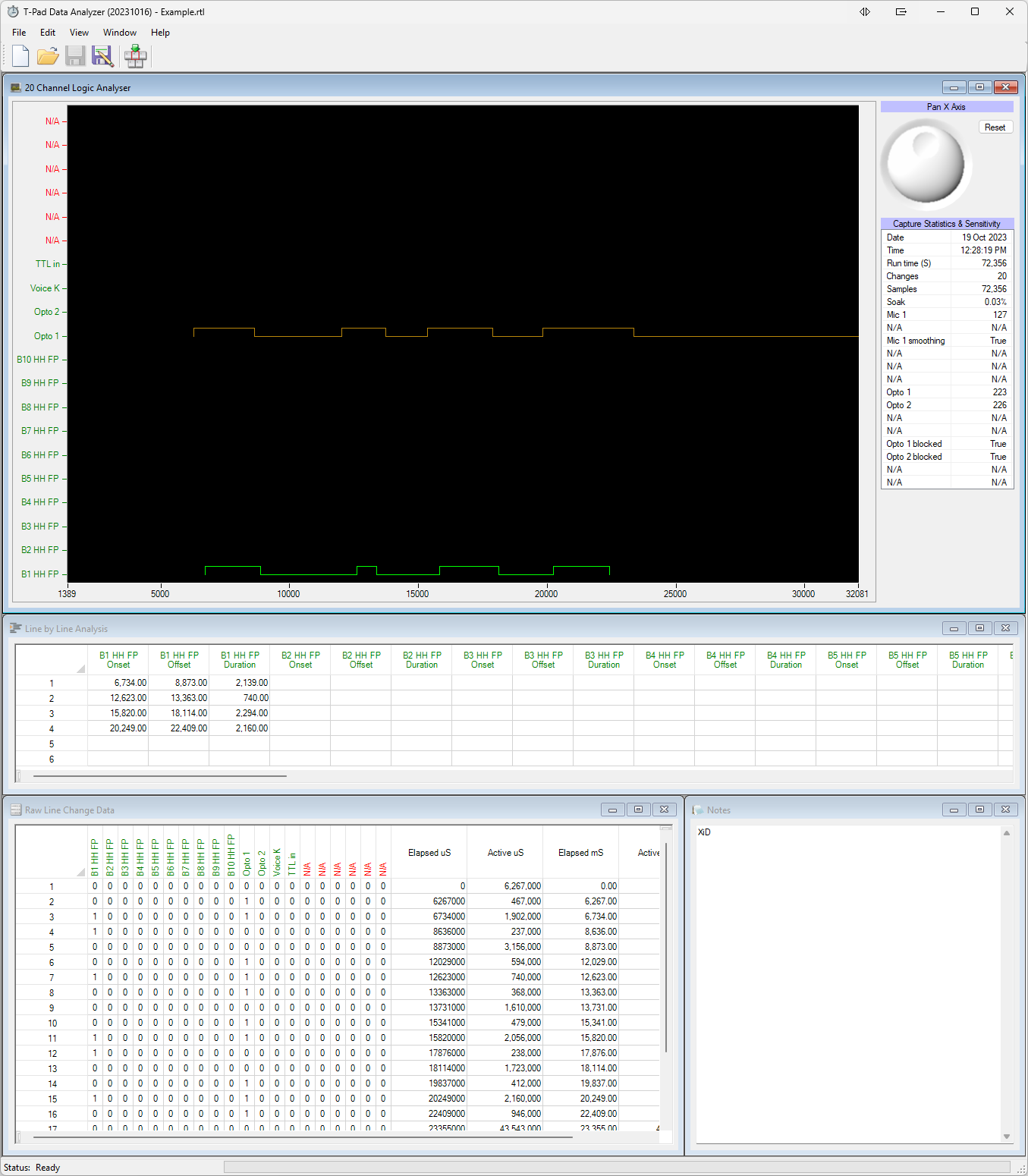
The 20 Channel Logic Analyzer makes it easy to look at individual visual stimuli and a responses. For example it is easy to see the onset, duration and offset of a visual stimulus image in the real world, i.e. independently timestamped by the T-Pad. This can then be compared with the onset of say a button press as shown below.
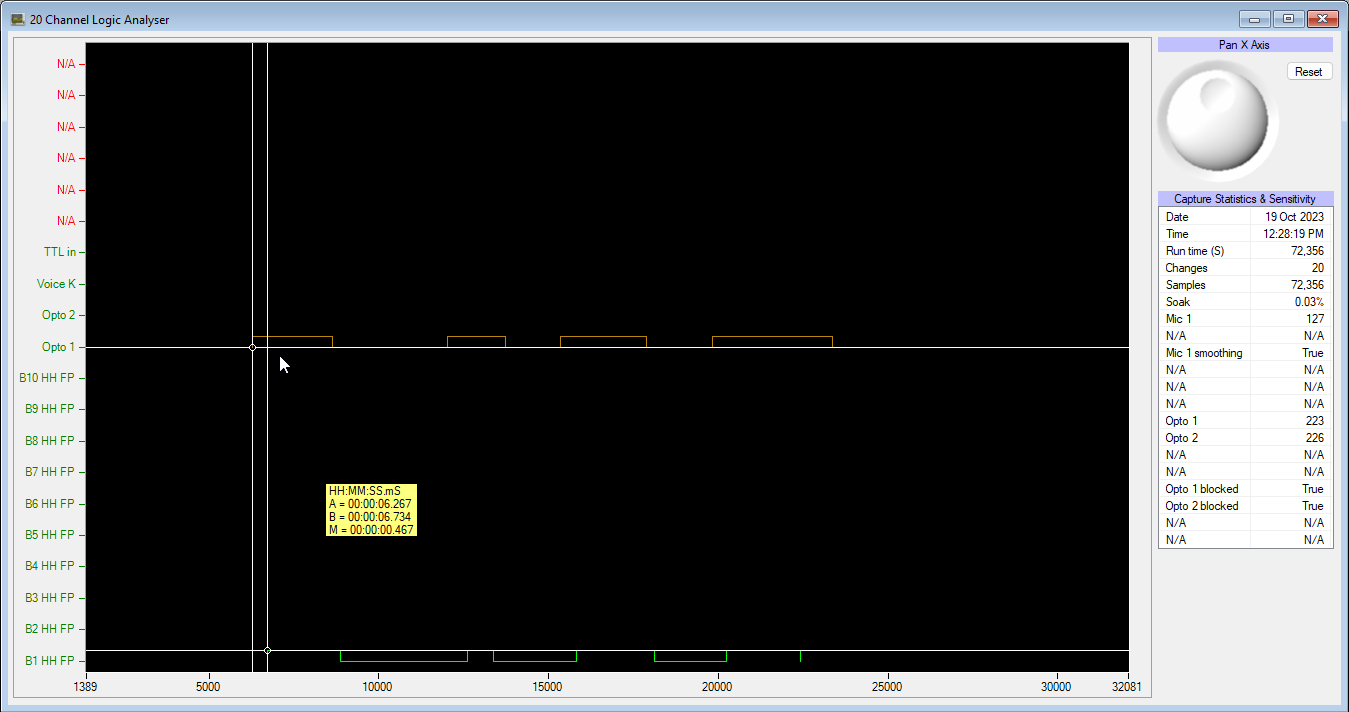
In the example shown a measurement cursor has been snapped to the onset of a visual stimulus image detected by the T-Pad opto-detector. A second cursor has then been snapped to onset of button 1. We can see that the RT is 467 mS. Remember all events, e.g. the visual stimulus image and response button being pressed, are recorded in real time and independently timestamped by the T-Pads internal clock.
Range of button colors, sizes and clear caps
 A range of colored buttons are available to order.
A range of colored buttons are available to order.
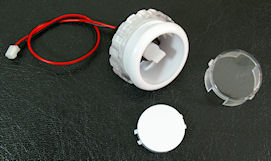 Clear cap buttons allow you to put your own labels under a tamper-proof clear plastic cover. Simply unscrew the button, remove the clear cap and place your own label under the button top (21 mm dia).
Clear cap buttons allow you to put your own labels under a tamper-proof clear plastic cover. Simply unscrew the button, remove the clear cap and place your own label under the button top (21 mm dia).
Clear cap buttons are available in a range of colors. The key cap is always clear to enable your participants to see your label underneath.
Smaller diameter buttons are also available on request.
Custom laser cut layouts to your own design
 You can customize your button layout by electing where to place between 1 to 10 buttons. Lid measurement 250 mm length x 160 mm width.
You can customize your button layout by electing where to place between 1 to 10 buttons. Lid measurement 250 mm length x 160 mm width.To help we have provided downloadable templates you can use with your favorite drawing package to customize your layout.
| CorelDRAW! 10 .CDR CorelDRAW! x4 .CDR |
AutoCAD .DWG AutoCAD .DXF |
Adobe Illustrator .AI Adobe Acrobat .PDF |
Windows Meta File .WMF |
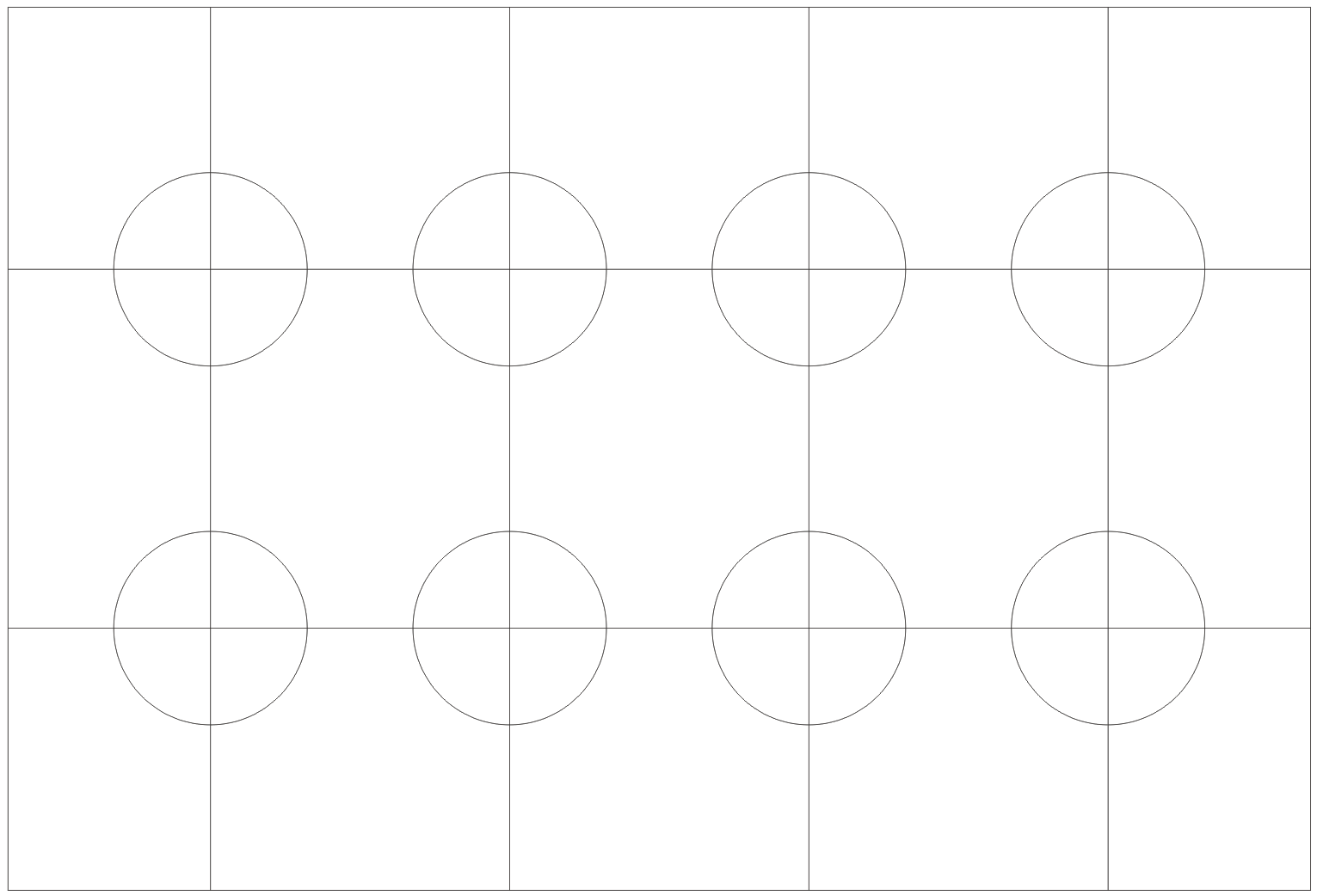 Send us your layout and we'll make it to your design. Alternatively give us a sketch and we'll send you a PDF proof of your design for approval. Nothing could be simpler!
Send us your layout and we'll make it to your design. Alternatively give us a sketch and we'll send you a PDF proof of your design for approval. Nothing could be simpler!Rear connectors

| Connector | What does it do | How can I use it |
| Mic (3.5 mm stereo socket) |
Allows you to plug-in the BBTK headset with condenser microphone or your own desktop or lapel mic. | Used to accept a vocal response rather than a button press within your experiment. Operates as a simple voice key with a crossing threshold for activation. |
| Opto (3.5 mm stereo socket) |
Allows you to plug in up to 2x BBTK opto-detectors, light sensors or photodiodes for detecting visual stimulus onsets or visual event markers. | Used for detecting and timestamping image onsets, durations and offsets. Can also be used for detecting visual event markers, e.g. black to white block transitions. Automatically produces sub-millisecond hardware TTL event markers or event triggers. |
| But 1/6 (3.5 mm stereo socket) |
Up to 2x external momentary or push-to-make buttons. | Allows you to use up to 10x external BBTK hand-helds, foot pedals or external buttons in total. These mirror the built-in buttons if present when pressed. |
| But 2/7 (3.5 mm stereo socket) |
Up to 2x external momentary or push-to-make buttons. | |
| But 3/8 (3.5 mm stereo socket) |
Up to 2x external momentary or push-to-make buttons. | |
| But 4/9 (3.5 mm stereo socket) |
Up to 2x external momentary or push-to-make buttons. | |
| But 5/10 (3.5 mm stereo socket) |
Up to 2x external momentary or push-to-make buttons. | |
| Serial (USB 'B' square socket to PC 'A' flat) |
Connects to the PC you want to stream serial timing and event data to. Uses an industry standard FTDI Virtual COM Port (VCP) at 115,200. | Streams serial data in an easy to understand XiD compatible format which represents, light sensor events, button presses, voice key activation and TTL inputs together with an independent hardware based millisecond timer. |
| Keyboard (USB 'B' square socket to PC 'A' flat) |
Connects to the PC you want to accept keyboard responses on. | Each button sends a standard key down response as might a normal keyboard if you pressed keys "a" through "j" for example. Opto or light sensor 1 would produce a "k" and Opto 2 a "l". Voice key activation would produce an "m" and TTL In triggers an "n". |
| TTL I/O 1 (RJ45) |
TTL 0/5V Digital I/O. | Independent hardware based TTL triggers for event marking via an 8 bit port. |
| TTL I/O 2 (RJ45) |
TTL 0/5V Digital I/O. | Independent hardware based TTL triggers for event marking via an 8 bit port. |
| Mode LED | Indicates what mode the T-pad is operating in. |
Shows which mode the T-Pad is in when set from PC over serial or when the mode button is pressed. |
| Mode Button | Allows you to select mode by pressing it. |
Cycles through the available modes. Each time the button is pressed the LED will change color to indicate the current mode. |
Technical specifications
|
|
Operating modes |
|
Changes when mode set from PC over serial or when the mode button is pressed:
|
|
2x RJ45 Event marking TTL output triggers |
|
TTL I/O 1 (RJ45) - TTL 0/5V Digital I/O:
|
TTL I/O 2 (RJ45) - TTL 0/5V Digital I/O:
|
*Remember although our USB response pads are millisecond accurate and help reduce RT variability in your experiments they can't automatically correct for any mistimings that are inherent within the experiment generator you use. Hardware capable of sub-millisecond accuracy.
Unless otherwise labelled, all products offered for sale by The Black Box ToolKit Ltd are for academic study and/or research use only.

